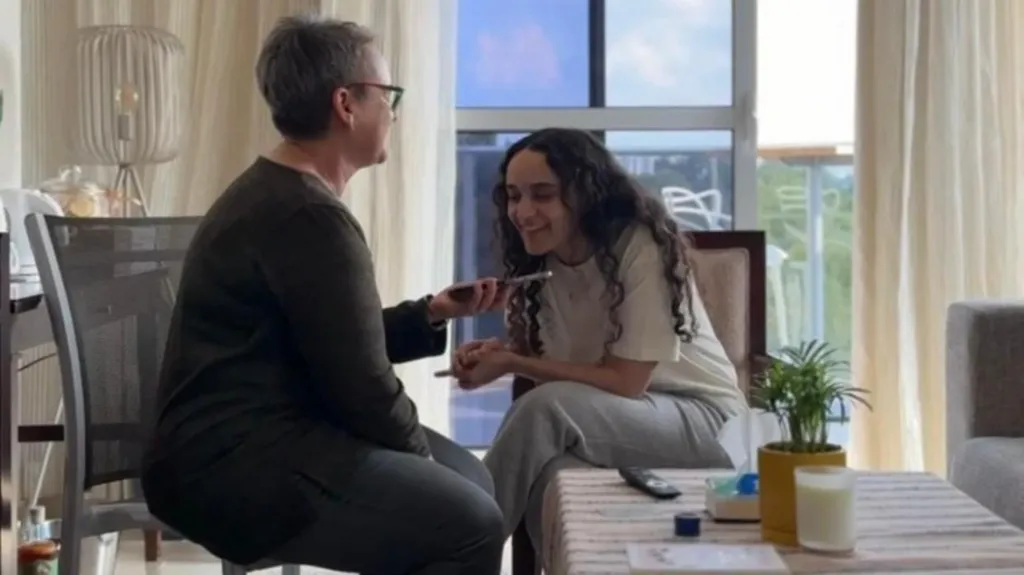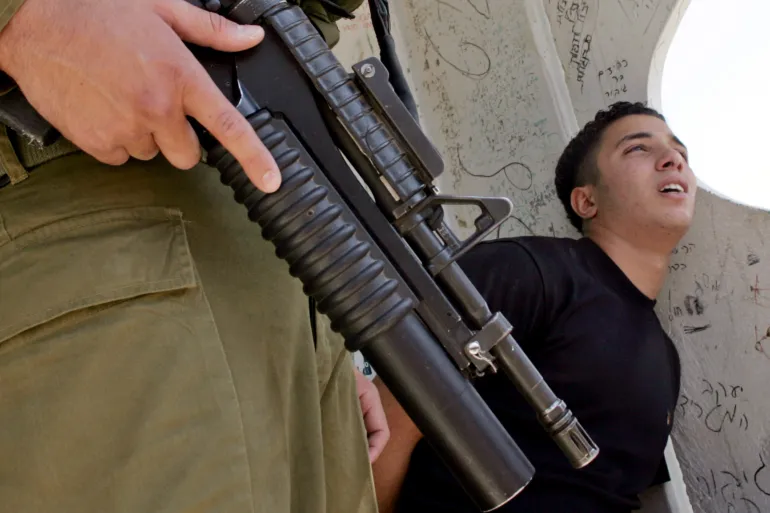“Ceasefire Now” protests typically call for an immediate end to military actions between Israel and Palestinian groups. They are often organized by human rights groups, peace activists, and supporters of Palestinian rights. These protests usually demand:
- An immediate halt to all hostilities
- Protection of Palestinian lives
- Humanitarian aid access to Palestinians
- Negotiations for a long-term peace solution
Since the Swords of Iron war began on October 7, there have been 3,891 pro-Israeli and pro-Palestinian demonstrations across 92 countries. Data shows that pro-Palestinian demonstrations significantly outnumber pro-Israel ones Currently, 95% of related demonstrations are against Israel.
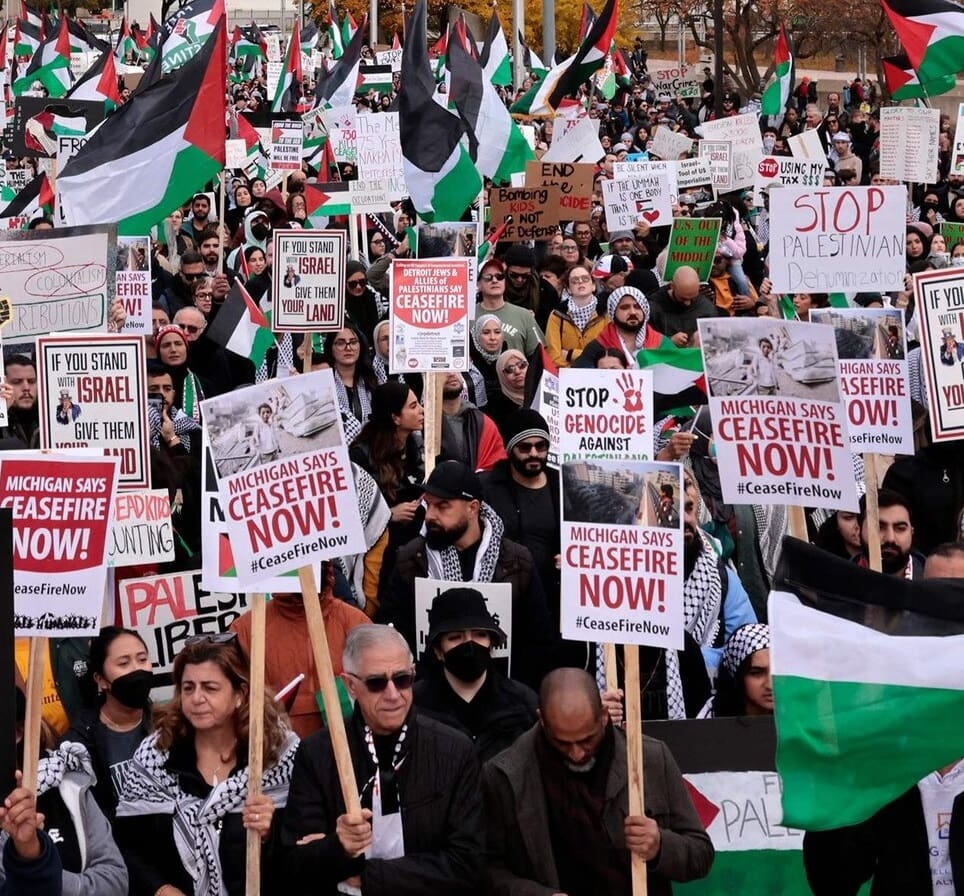
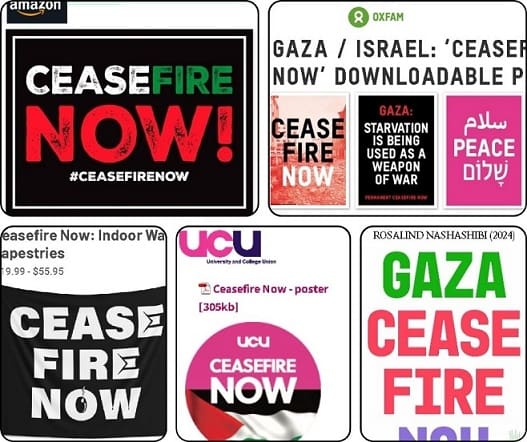
Supporters of the protests have utilized various online platforms to distribute promotional materials. Posters and photos related to the cause are widely available on the internet, often for free download or in exchange for a donation. These materials can be found on diverse websites, including those of universities and college unions, Islamic and European art sites, and human rights organizations. Even e-commerce giant Amazon has listings for such items. This digital distribution allows protesters to easily access and print materials for demonstrations.
Many “Ceasefire Now” protests primarily demand action from Israel, but this focus overlooks key aspects of the conflict. On October 7, 2023, Hamas broke a long-standing ceasefire by launching a major attack on Israel, resulting in numerous casualties and hostages taken. This action shattered the relative calm and triggered the current conflict.
From October 2023 to July 2024, Hamas repeatedly rejected ceasefire proposals. These rejections included offers for temporary ceasefires, hostage exchanges, and longer-term peace plans.
- On December 1, 2023 Hamas broke the ceasefire agreed upon on November 24, as Hamas launched rockets into Sderot.
- On January 23, 2024 reports emerged of Hamas rejecting a proposed 2 month ceasefire plan.
- On February 7 Hamas answers a suggested deal with the following non realistic demands: an end to the war , the release of Palestinian prisoners and the rebuilding of the enclave, all were non-starter conditions since it would make Israel loose the war it was winning.
- On February 27 Hamas rejected yet another offer, claiming that it offered only a temporary ceasefire rather than a permanent one, thus, not ending the war, and criticized the inclusion of a conditions that Israeli forces should remain in Gaza once hostages are released, that, since if Israel left Gaza Israel would be exposed again to a terror attack and an increase of missiles attack (which continued all through the war), since Hamas are well known for braking ceasefires.
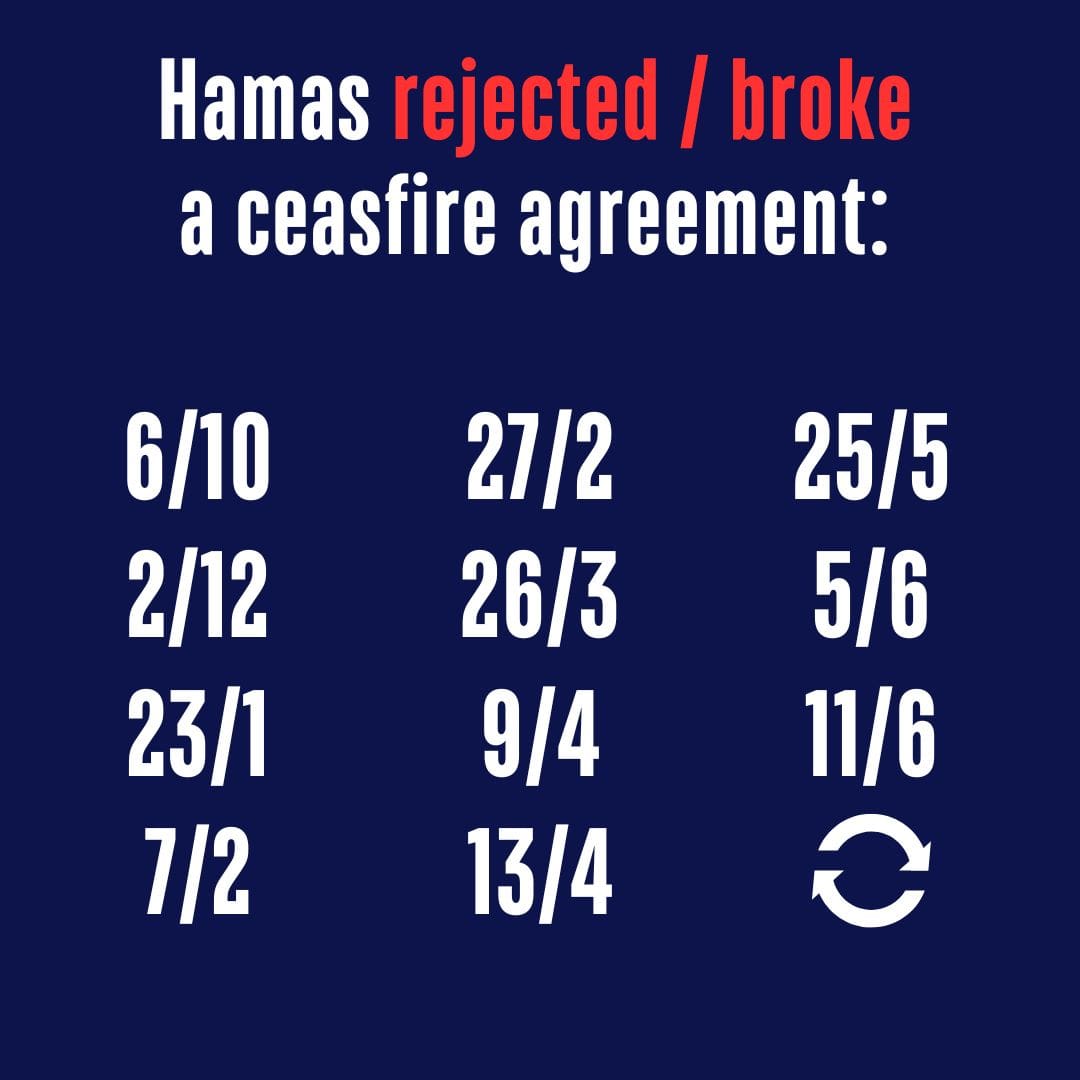

On March 26, April 9, April 13, May 25, June 5, June 11 and ever since, Hamas keeps rejecting ceasefire suggestions, and agrees only to a One sided end of the war, one sided since, again, Hamas is a terror organization, not obligated to international law, known for attacking Israel in ceasefires times.
Israel on the other hand responded to various ceasefire proposals in different ways:
- Israel generally stated its willingness to consider ceasefires with specific conditions.
- Israel agreed to daily temporary ceasefires, for humanitarian purposes, and longer ones for hostage exchanges.
- Israel rejected some ceasefire proposals that it felt did not adequately address its security concerns or the return of hostages.
- Israel’s position often emphasized that any long-term ceasefire would need to include the release of all hostages and guarantees against future attacks, which Hamas don’t agree to.
Given the complex history of this conflict, perhaps “Ceasefire Now” protesters should reconsider their approach. The primary focus on Israel overlooks Hamas’s role in initiating the current conflict and their repeated rejections of ceasefire proposals.
It may be more productive for protesters to address Hamas directly, or at least verify if Hamas is genuinely interested in a ceasefire. If Hamas remains unwilling to agree to a ceasefire, these protests – which often involve significant costs, disrupt public order, and sometimes lead to vandalism or violence – might be unnecessary or misdirected.
Protesters could potentially redirect their efforts towards more constructive avenues that address the root causes of the conflict or support diplomatic solutions that consider the security concerns of all parties involved. This approach might lead to more meaningful progress towards peace in the region.


